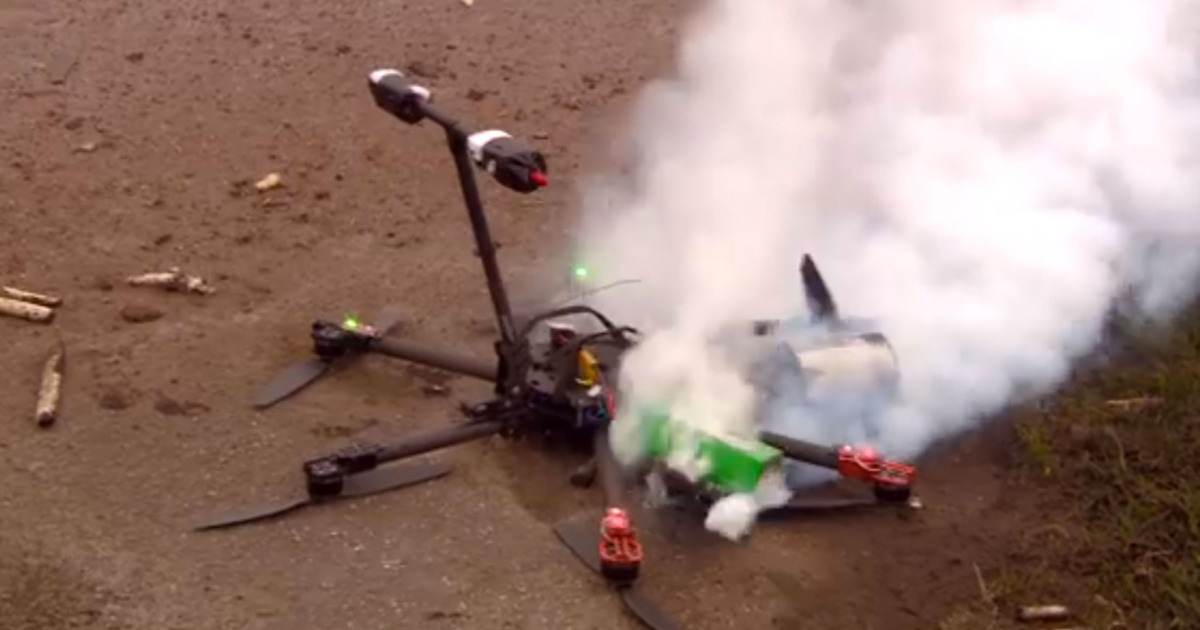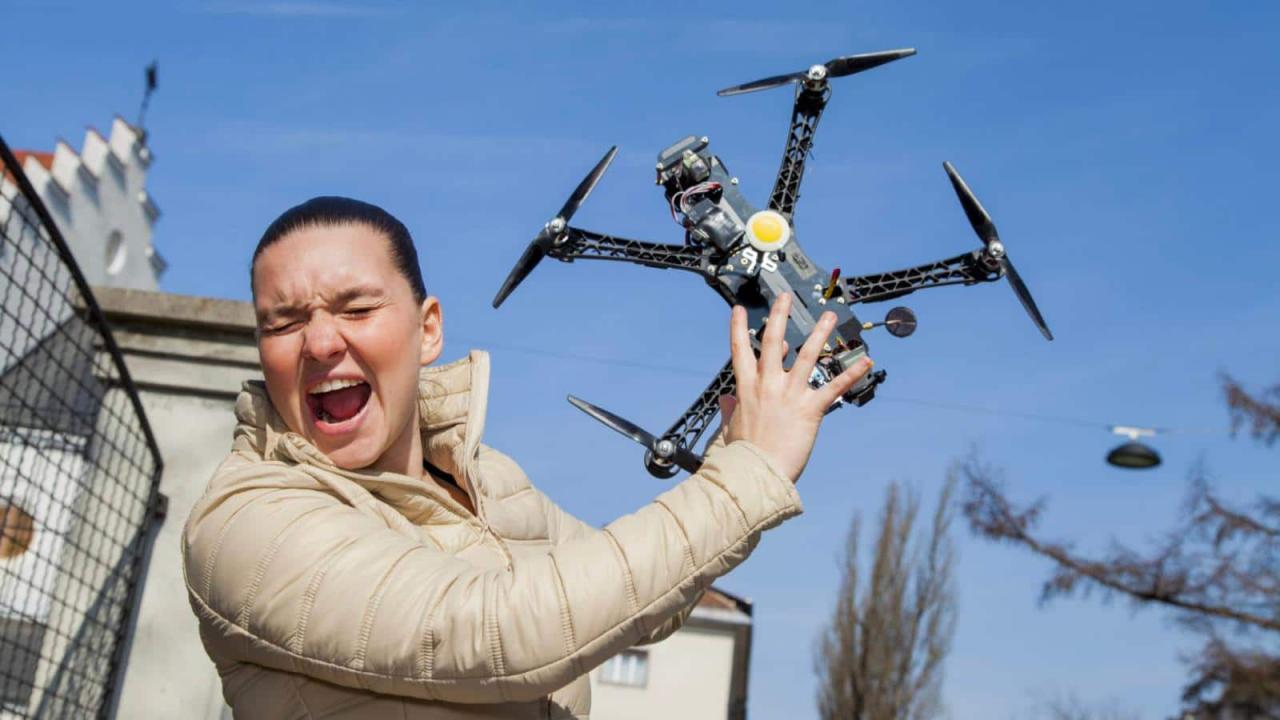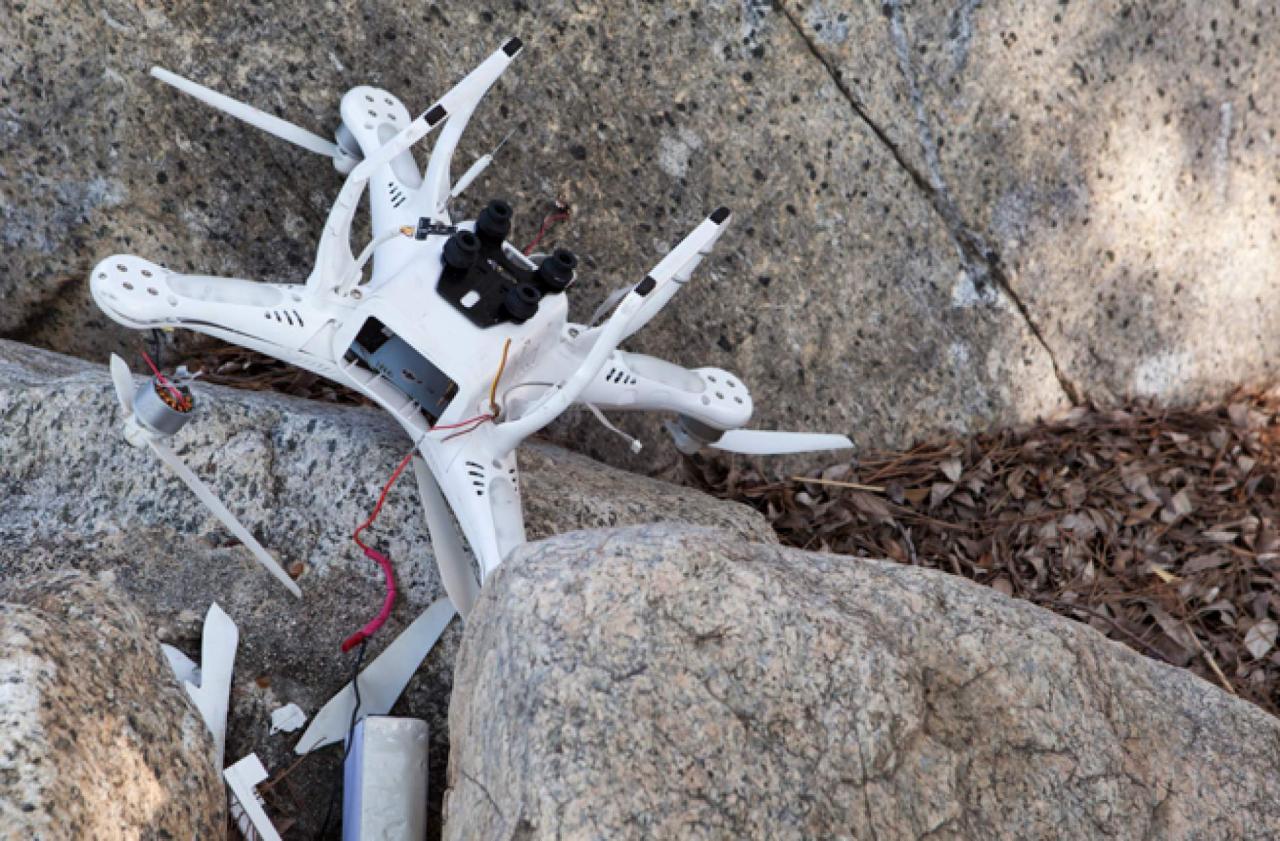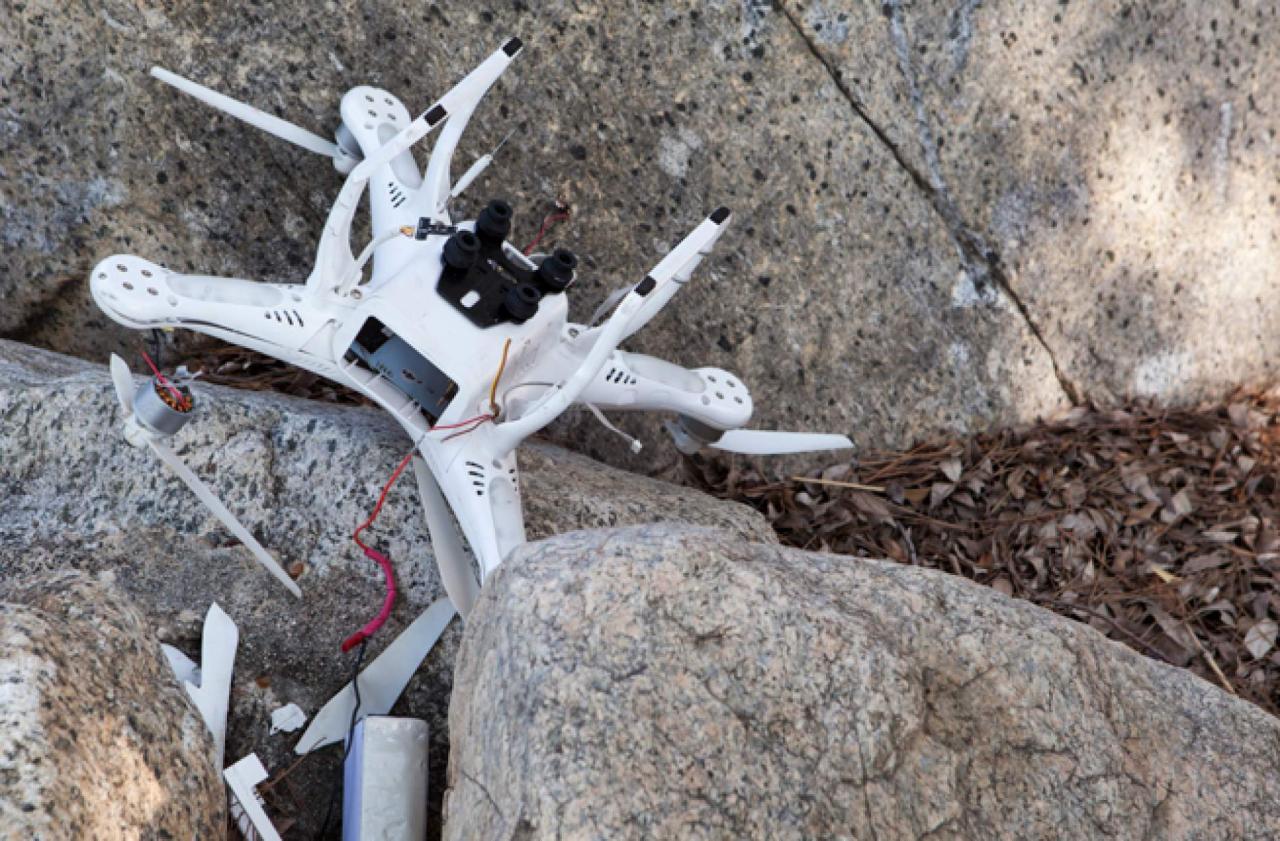Drone crash in Paris: Imagine the scene – a buzzing drone suddenly falling from the sky in the heart of the City of Lights. This incident, however seemingly small, has significant implications, sparking investigations into the cause, highlighting safety concerns, and raising questions about drone regulations. We’ll delve into the aftermath, the investigation’s findings, the impact on Parisian life, and what steps can be taken to prevent similar incidents in the future.
This article will explore the various facets of this event, from the immediate emergency response and the subsequent investigation to the broader implications for public safety and drone regulations in Paris. We’ll examine the drone’s specifications, the pilot’s background, and the potential legal repercussions. We’ll also look at how this incident has impacted public perception and the media’s response.
Drone Crash in Paris: A Detailed Analysis
A drone crash in Paris recently sparked concerns about public safety and the regulations surrounding drone operation in densely populated urban areas. This article delves into the specifics of the incident, examining the immediate aftermath, the investigative process, the drone’s specifications, and the broader implications for Parisian infrastructure, public safety, and regulations.
Immediate Aftermath of the Drone Crash
The drone crash occurred near the Eiffel Tower, causing a brief disruption to the surrounding area. The exact location is still under investigation, but reports suggest the drone impacted a relatively sparsely populated area of the Champ de Mars. Initial reports indicated minor damage to nearby landscaping and no significant structural damage to buildings. Emergency services, including police and paramedics, quickly responded to the scene, securing the area and assessing any potential injuries.
Fortunately, no injuries were reported among the public.
Investigation and Cause Determination, Drone crash in paris

A thorough investigation was launched to determine the cause of the crash. This involved examining the drone’s wreckage, interviewing witnesses, and analyzing any available flight data. Potential causes being explored included mechanical failure of the drone, pilot error, or interference from external factors such as unexpected wind gusts or radio frequency interference. The investigation is ongoing, and a full report is expected in the coming weeks.
That drone crash in Paris got everyone talking about safety regulations, right? It makes you wonder about the tech involved; maybe something like the advanced features in sky elements drones could help prevent similar incidents. Hopefully, future drone designs will incorporate better fail-safes to avoid another Paris-style mishap.
Drone Specifications and Operator Information

The drone involved was identified as a DJI Mavic 3, a popular model known for its advanced camera capabilities and relatively long flight time. The operator’s identity and experience level are currently under investigation. Information regarding their licensing and adherence to existing regulations is also being scrutinized. Preliminary information suggests the drone was being flown for recreational purposes, but the exact flight path and intended purpose are still being verified.
That drone crash in Paris really highlights the risks involved in drone operation, even for experienced pilots. It makes you appreciate the level of planning and safety protocols needed for a large-scale event like the orlando drone show , where hundreds of drones fly in complex formations. Hopefully, incidents like the Paris crash will lead to stricter regulations and improved safety measures for all drone operations.
Impact on Parisian Infrastructure and Public Safety

The impact of the drone crash on Parisian infrastructure was minimal. The incident caused a brief disruption to pedestrian traffic near the crash site while emergency services secured the area. The incident, however, raised serious concerns about public safety in relation to unregulated drone operation in a busy urban environment. The potential for future accidents involving drones, especially larger or heavier models, warrants increased attention to safety measures.
| Impact Area | Description of Impact | Estimated Duration of Impact |
|---|---|---|
| Tourism | Minor disruption to pedestrian traffic near the Eiffel Tower. | Less than one hour. |
| Transportation | No significant impact on public transportation. | None. |
| Public Perception | Increased public awareness of drone safety concerns. | Ongoing. |
| Environmental | Minor damage to landscaping. | Ongoing until repair. |
Regulatory and Legal Implications
France, like many countries, has regulations governing drone operation, including restrictions on flight zones, altitude limits, and operator licensing. The crash highlights the need for stricter enforcement of existing regulations and possibly the need for updated regulations to address the evolving technology and its potential risks. Potential legal consequences for the operator could include fines, suspension of flight privileges, or even criminal charges depending on the findings of the investigation.
Public Reaction and Media Coverage
The drone crash generated significant media attention in Paris and beyond. Social media was abuzz with discussions about drone safety, regulatory oversight, and the potential risks associated with drone use in urban environments. News coverage focused on the incident’s details, the ongoing investigation, and the broader implications for drone regulations. Public reaction was a mix of concern, curiosity, and calls for improved safety measures.
Preventive Measures and Future Recommendations
Several measures can be implemented to prevent future drone crashes. These include stricter enforcement of existing regulations, improved drone technology incorporating features such as automatic obstacle avoidance and geofencing, and enhanced pilot training programs that emphasize safe operating procedures and risk mitigation. Investing in advanced drone detection and tracking systems could also help monitor drone activity in restricted areas, thereby enhancing public safety.
Conclusive Thoughts

The drone crash in Paris serves as a stark reminder of the potential risks associated with increasingly prevalent drone technology. While drones offer numerous benefits, ensuring safe operation requires a multi-pronged approach encompassing stricter regulations, improved technology, and comprehensive pilot training. This incident underscores the urgent need for a proactive, preventative strategy to safeguard Parisian airspace and public safety, preventing future occurrences and minimizing potential harm.
Questions and Answers
What type of damage did the drone cause?
The extent of the damage will depend on the specifics of the incident, but potential damage could include property damage (buildings, vehicles), injuries to people, and disruption to traffic or other services.
Were there any arrests made?
Whether arrests were made depends on the investigation’s findings. If pilot error or negligence is determined, legal consequences could follow.
How common are drone crashes in Paris?
A drone crash in Paris highlights the growing concerns about drone safety. This incident makes you think about the potential dangers, especially after reading about a similar situation where a boy hit by drone suffered injuries. The Paris crash, while perhaps not involving injury this time, underscores the need for stricter regulations and responsible drone operation to prevent future accidents.
The frequency of drone crashes in Paris isn’t readily available public data. However, this incident highlights the need for better data collection and reporting on such occurrences.
What insurance covers drone accidents?
Drone operators should have liability insurance to cover potential damages caused by accidents. Specific coverage details vary depending on the policy.
